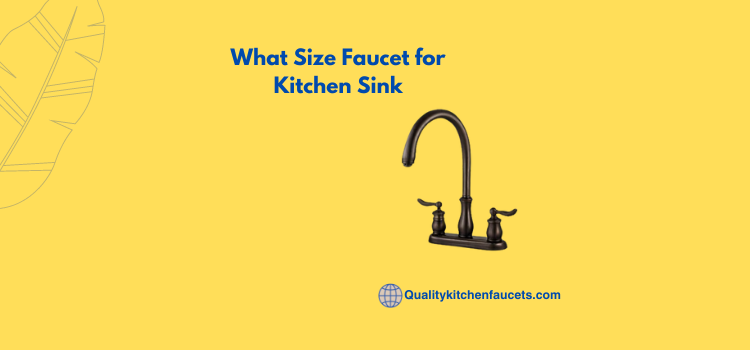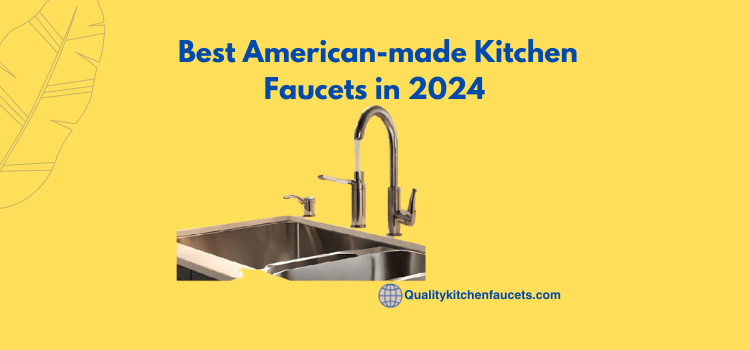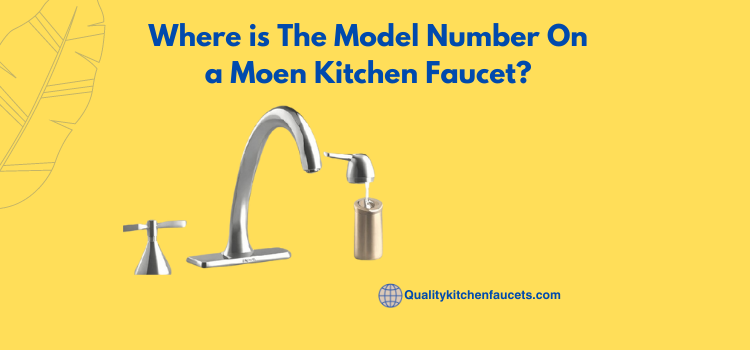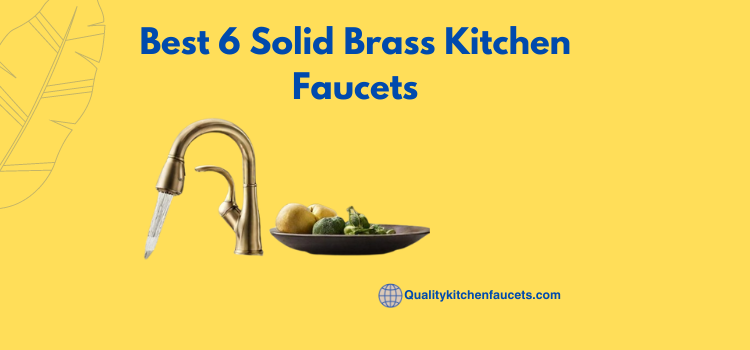What Size Faucet for Kitchen Sink
be a puzzling task, fraught with subtle complexities and a broad spectrum of options. Homeowners often find themselves lost in faucets’ myriad dimensions, styles, and functionalities, leading to an overwhelming decision-making process. The challenge lies not just in aesthetics but also in ensuring the compatibility of the faucet with the kitchen sink, affecting daily usage and convenience.
The good news is that there’s a strategy to navigate through this confusion tailored to simplify your decision. By understanding the key measurements, the sink’s configuration, and the space’s overall design, you can pinpoint the perfect faucet that blends functionality with style. This guide aims to demystify the process, present a clear pathway to making an informed choice, and ensure your kitchen’s efficiency and appeal are maximized.
We’ll walk you through the essentials, from understanding standard sizes and features to considering the aesthetics and practical aspects of your faucet. Embark on this reading journey to transform your kitchen functionality and design, making your faucet selection not just an informed decision but a seamless addition to your daily life.
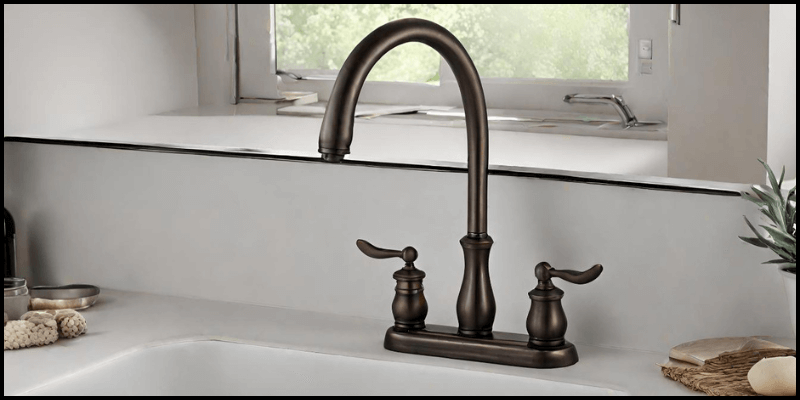
What Size Faucet for Kitchen Sink ? in 10 Steps
If you follow the exact one given below by an expert, you’ll get a ride on your What Size Faucet for kitchen basin issues.
Step 1: Measure Your Sink’s Dimensions
These dimensions will help you determine the faucet’s height and reach, ensuring it’s proportionate to your lavatory size.
Step 2: Consider the Number of Holes
Count the number of mounting holes in your sinkhole. Kitchen faucets typically require between one and four holes. Knowing this will help you select a faucet that fits or decide if you need a deck plate to cover extra holes.
Step 3: Choose a Faucet Height
Decide on an appropriate faucet height based on the depth of your washbowl and the space above it. High-arc faucets are excellent for large pots, whereas low-arc faucets suit more compact kitchen setups.
Step 4: Determine the Faucet Reach
The reach of the faucet’s discharge should be enough to cover the entire sink without splashing.
Step 5: Select the Installation Type
Decide if you want a deck-mounted faucet (installed directly on the sink or countertop) or a wall-mounted faucet. This choice influences the faucet’s style, functionality, and installation process.
Step 6: Verify both the size and the type of connections required to avoid unnecessary adapters or modifications.
Step 7: Opt for a Suitable Style and Finish
Choose a bibcock that complements your kitchen’s design. Consider the style, finish, and color that blend well with your other kitchen fixtures and overall décor.
Step 8: Evaluate the Valve Type
The valve type affects the faucet’s durability and leakage prevention. Ceramic valves are famous for their longevity and leak-free performance.
Step 9: Consider Additional Features
Think about any extra features you might want, such as a pull-down or pull-out release, a sprayer for efficient cleaning, or touchless operation for hygiene and convenience.
Step 10: Set Your Budget
Finally, set a realistic budget that reflects your priorities, considering both the initial acquisition cost and potential long-term savings from efficient water use and durability.
By following these ten steps, you’ll have a clear roadmap to choosing the perfect pour size for your sink unit, combining aesthetics, functionality, and efficiency in your selection.
Standard vs. Custom Valve Sizes: A Comparative Overview
When exploring spigot sizes, homeowners are typically faced with choosing between standard and custom options.
Standard AP sizes are designed to meet the requirements of most kitchen sinks, offering a balance of functionality and aesthetics at a more accessible price point.
These faucets are readily available for quick home improvement renovations or replacements.
Conversely, custom bibcock sizes provide a tailored solution, allowing for a perfect match with unique or oversized sinks.
While custom faucets can significantly elevate a kitchen’s design and ensure seamless integration with the sink, they often come at a higher
Understanding the nuances between standard and custom emit sizes can help homeowners make a decision that best suits their kitchen’s specific needs and personal preferences.
The Architectural Influence on Valve Size Selection
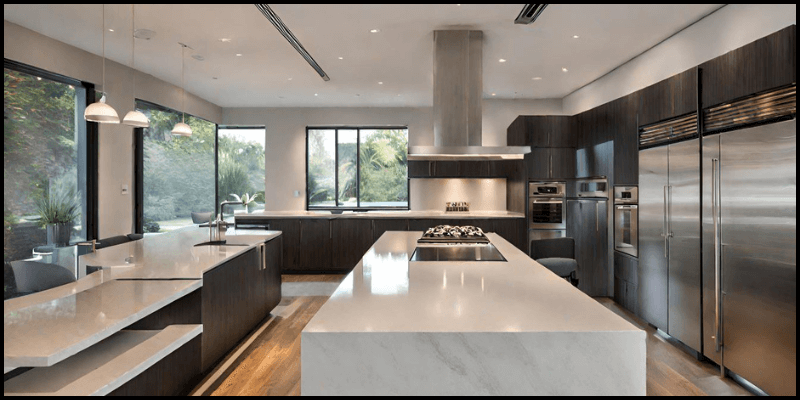
The architectural design of a kitchen significantly influences the selection of spigot size, incorporating both function and form into the heart of the home.
Kitchens designed in specific architectural styles, such as modern, farmhouse, or traditional, demand faucets that not only match their aesthetic but also comply with their inherent functional requirements.
For instance, a sleek, minimalist kitchen with clean lines would benefit from an app that reflects this simplicity, likely with a high-arc and a chrome or stainless steel finish for a contemporary feel.
Conversely, a kitchen that embodies a more rustic or farmhouse style may suit a bibcock with a bronze or copper finish, providing a warm, antique look that complements the overall theme.
This decision-making process extends beyond mere appearance, influencing the kitchen’s workflow and interaction spaces.
By considering the architectural influence, homeowners can ensure the dispense enhances both the kitchen’s functionality and its architectural integrity, resulting in a harmonious and efficient space.
Emergent Trends in Kitchen Faucet Size and Design
The landscape of kitchen spigot design is witnessing a remarkable evolution, driven by technological advancements and changing consumer preferences.
One emergent trend is the integration of intelligent technology into faucets. These faucets offer features like touchless operation, water temperature display, and voice control capabilities, which enhance both convenience and hygiene in the kitchen.
Size-wise, there is a move towards more streamlined and sleek designs, with compact models that maximize space without sacrificing functionality becoming increasingly popular.
Additionally, there’s a growing interest in eco-friendly faucets that conserve water and reduce utility bills, reflecting a broader societal shift towards sustainability.
These trends underscore a dynamic industry for homeowners, promising a future where kitchen faucets are not only functional pieces of hardware but also integral components of smart home ecosystems.
Balancing Aesthetics and Functionality: A Guide to AP Proportionality
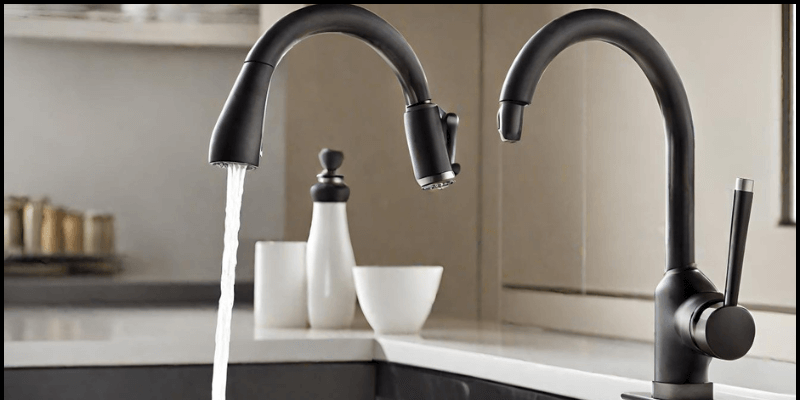
Choosing the right faucet for your kitchen involves proportionality.
The key is to select a bibcock that not only complements the design elements of your kitchen but also meets your functional needs without overwhelming the space.
Proportionality relates to the size of the faucet in relation to the sink and the overall kitchen layout. An app that is too large can dominate a small sink, making it look out of place, while a too-small faucet might not provide the coverage needed for larger sinks.
This balance also extends to the faucet’s handle design, discharge height, and reach, which should all contribute to a seamless kitchen experience. Factoring in the visual weight of the bibcock in relation to other appliances and fixtures in the kitchen is crucial.
Achieving the perfect balance ensures that the faucet enhances the kitchen’s functionality while contributing positively to its overall aesthetic appeal.
The Environmental Aspect of Tap Size—Efficiency Meets Design
In the quest for a more sustainable and eco-conscious lifestyle, the environmental impact of kitchen fixtures, including faucets, is garnering increased attention.
The size and design of a release directly influence water consumption and, by extension, the ecological footprint of a household. Eco-friendly faucets are designed with water efficiency in mind, featuring advanced aerators and flow restrictors to minimize waste without compromising performance.
These innovations not only contribute to water conservation but also align with contemporary design aesthetics, offering sleek, modern forms that enhance the kitchen’s appearance.
By prioritizing efficiency and design, homeowners can make a positive environmental impact, reducing their water usage and utility bills while enjoying a stylish and functional kitchen space.
This harmonious blend of efficiency and design underlines the crucial role of spigot size in achieving both environmental sustainability and aesthetic excellence in modern kitchens.
From Antique to Modern: How Emerge Sizes Have Evolved
The evolution of kitchen app sizes over the years reflects not only changes in design preferences but also advancements in technology and shifts in societal needs.
In the early 20th century, kitchen faucets were predominantly functional, with little consideration for aesthetics or water conservation. These faucets typically featured a standard size and design, focusing primarily on durability.
However, as interior design emerged as a significant aspect of home decoration, the demand for more diverse and stylish faucets began to grow. This period witnessed the introduction of different sizes and shapes, allowing homeowners to customize their kitchens more extensively.
Technological advancements further propelled the evolution of faucet sizes. The development of more efficient manufacturing processes enabled the production of faucets in a wide array of sizes, catering to the varied needs of modern kitchens with different sink sizes and layout configurations.
Today, the market offers everything from compact, space-saving models for urban apartments to grand, professional-grade faucets for spacious, gourmet kitchens, showcasing a remarkable transition from the one-size-fits-all approach of the past to the highly personalized and diverse selections available now.
This evolution underscores the dynamic nature of cooking area design, reflecting broader trends in home improvement and environmental sustainability.
The Role of Scullery Size and Layout in Faucet Selection
Choosing the perfect kitchen faucet extends beyond mere aesthetics and functionality; it is intrinsically linked to the kitchen’s size and layout.
A large, open kitchen layout allows you to opt for taller, more pronounced faucets that can serve as a focal point without obstructing views or overwhelming the space.
Conversely, in a compact kitchen, a sleek, low-profile faucet may be more appropriate, ensuring that every element remains proportional and harmonious.
The layout also influences the faucet’s practical aspects, such as the necessity for a swivel gush in kitchens with dual sinks or the option for a pull-down feature in tighter spaces where functionality must be maximized without sacrificing style.
Understanding the interplay between cookhouse size, layout, and faucet selection is essential for creating a visually pleasing space that meets users’ daily needs with ease and efficiency.
High-Tech Faucets: Size and Integration in Smart Kitchens
The integration of technology in kitchen faucets has redefined what it means to have a modern galley.
High-tech faucets, often available in sizes adaptable to large and small spaces, feature advancements such as touchless operation, temperature control displays, and water efficiency sensors.
These faucets are not just about delivering water; they’re about enhancing the overall cooking and cleaning experience, making tasks more intuitive and less time-consuming.
For instance, smart faucets can be controlled via voice commands or smartphone apps. These allow users to activate specific water temperatures or measure precise amounts of water for cooking, thereby reducing waste and promoting sustainability.
The size of these high-tech faucets is designed to complement the intelligent kitchen’s aesthetic, seamlessly integrating with other smart appliances and providing a sleek, futuristic look.
This marriage of size, technology, and design exemplifies how faucets have evolved from simple fixtures to central components of the smart home ecosystem, offering a blend of convenience, conservation, and sophistication.
Valve Size Compatibility with Various Sink Types
Selecting the correct faucet scale is critical to ensuring compatibility with various sink types, ensuring not just aesthetic harmony but optimal functionality.
For traditional, deep-basin farmhouse sinks, tall faucets with extended reach are preferred, as they provide ample clearance and ease for filling large pots and pans.
Contrastingly, for shallow vessel sinks, shorter faucets with aerated flow prevent splashing and water waste, enhancing the sink’s usability.
In the case of under-mount sinks, tap size and reach must be carefully considered to maintain a proportional look and ensure water flows directly into the drain, preventing spillage onto the countertop.
Similarly, for double basin sinks, faucets with a swivel spout or a pull-out spray function deliver the versatility and reach necessary to accommodate dual working areas.
Understanding the unique requirements of each sink type enables homeowners to choose faucets.the sink’s form and function. This illustrates the intricate relationship between faucet dimensions and sink compatibility.
Customization Options for Optimal Faucet Scale Fitting
Customization has become a key component in achieving the perfect valve size fitting, giving homeowners the power to tailor their faucets not just in terms of aesthetics but also in functionality to meet the specific needs of their kitchens.
Manufacturers now offer an impressive range of customizable options, from adjustable spout lengths and heights to interchangeable spray heads and handles.
This level of customization ensures that regardless of the kitchen’s size, layout, or the homeowner’s style, there is a faucet scale and configuration that fits perfectly.
Innovative features such as modular faucets, which can be assembled with various components to fit different sink types and cooking area setups, further highlight the industry’s shift towards versatility and personalization.
This adaptability not only enhances the user experience by allowing for a faucet that functions seamlessly within the space but also elevates the kitchen’s overall design, making customization a crucial aspect of spout size fitting.
Conclusion
The exploration and selection of the perfect scullery faucet have taught me the importance of marrying functionality with aesthetics.
From my experience, the faucet is not merely a tool for delivering water but a centerpiece that enhances the kitchen’s efficiency and style.
Through my journey, I’ve realized how critical the cuisine size and layout are in determining the best faucet choice.
Whether it was the consideration for a high-tech faucet to fit into my dream of an intelligent cookhouse or understanding the compatibility between faucet sizes and various sink types, each step was an enlightening part of creating a space that meets my daily needs while reflecting my style.
The multitude of customization options available allowed me to tailor my faucet not just in appearance but in utility, showing me the industry’s commitment to providing solutions that cater to any kitchen’s unique demands.
This exploration has been more than just about finding the right faucet—it’s about appreciating how these decisions contribute to crafting a galley that’s truly my own.
FAQs
What is the standard sink unit valve size?
The standard scullery sink tap size typically has a spout reach of about 8 to 10 inches and a spout height ranging from 3 to 8 inches.
How do I know what size faucet I need?
Determining the correct new faucet dimensions for your new kitchen faucet washbowl involves measuring the sink’s dimensions and ensuring the faucet’s spout reach and height are compatible with your sink type.
How do I know what kitchen faucet will fit?
To know which kitchen faucet will fit, measure your sink’s dimensions and consult with the faucet’s specification sheet or a professional for optimal compatibility.

